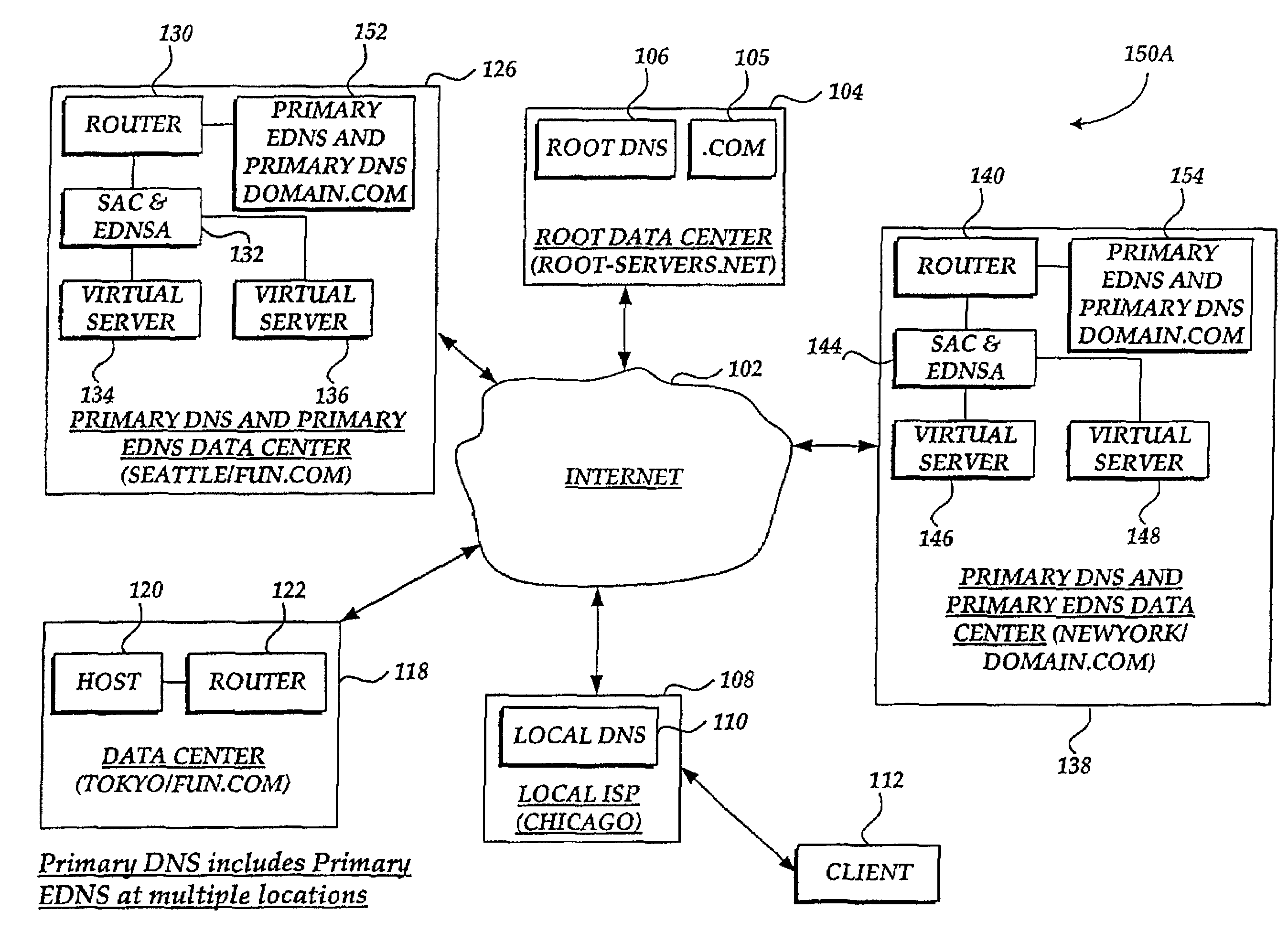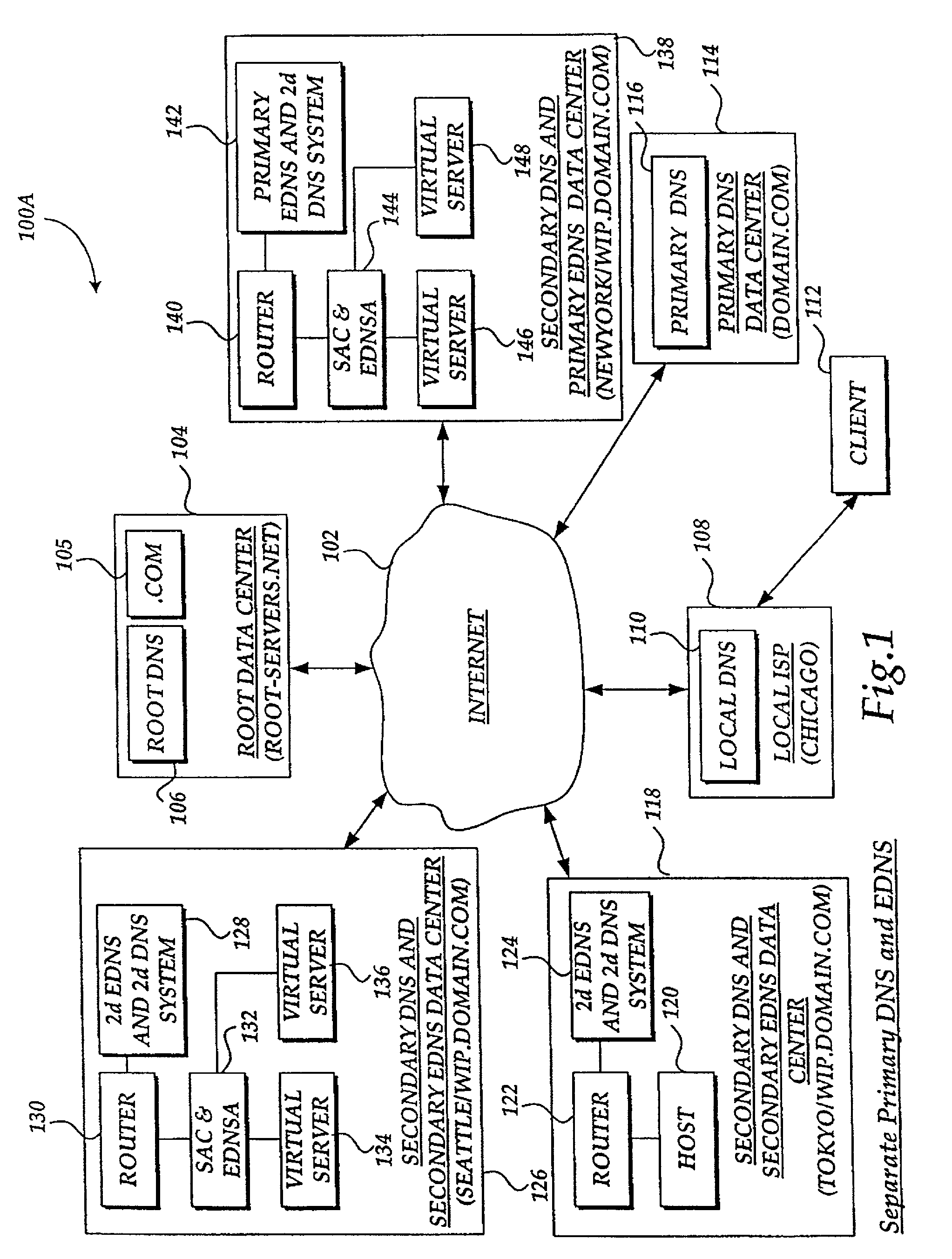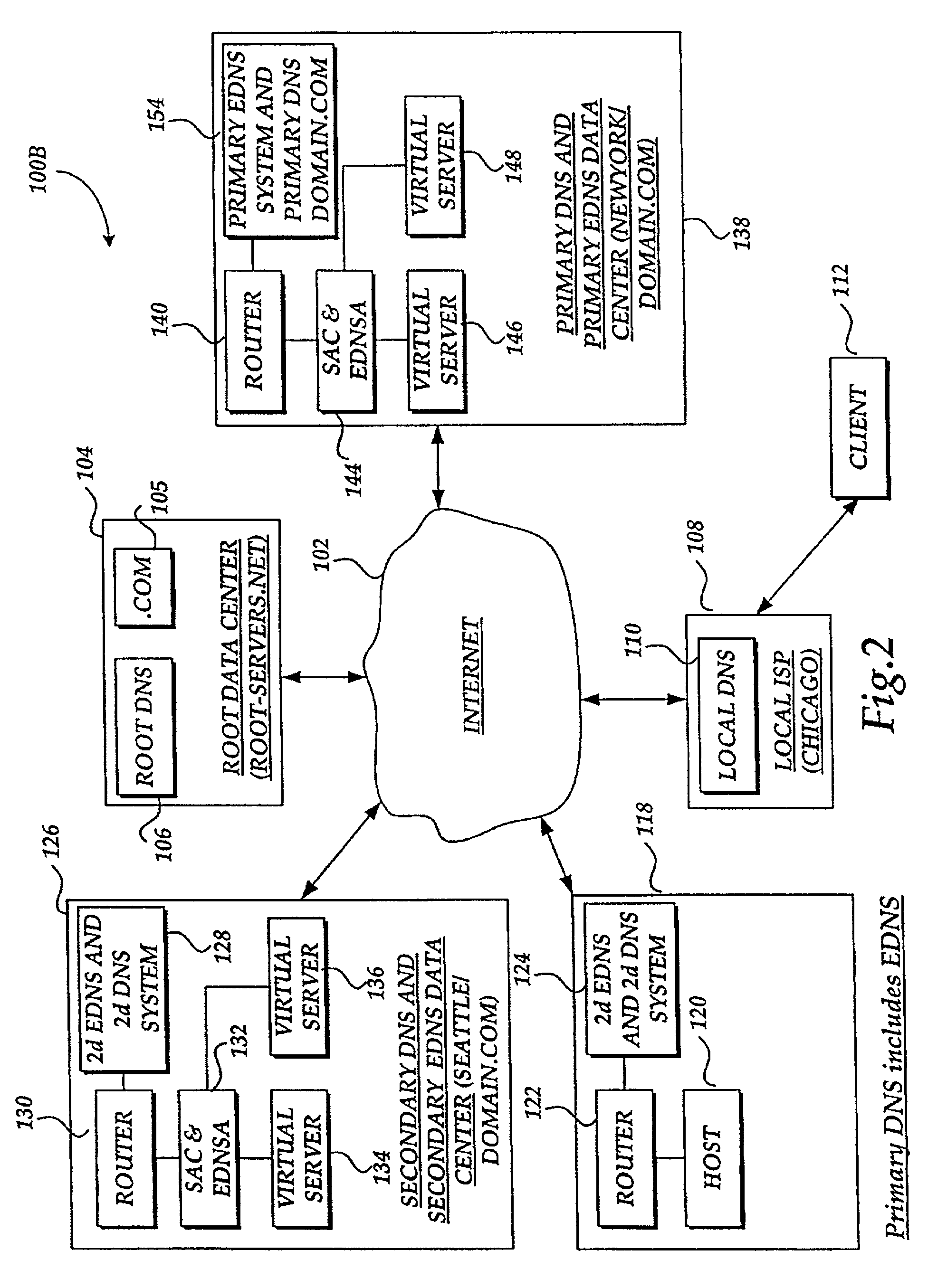Method and system for balancing load distribution on a wide area network
a wide area network and load demand technology, applied in the field of distributing load demand, can solve the problems of inability to balancing load demand between geographically distributed servers for web-based applications and content such as email and streamed multimedia data, and inability to automatically redirect client requests
- Summary
- Abstract
- Description
- Claims
- Application Information
AI Technical Summary
Benefits of technology
Problems solved by technology
Method used
Image
Examples
Embodiment Construction
[0041]The present invention provides a method for optimizing the accessibility and availability of data on a scaleable, fault tolerant wide area network (WAN). In accordance with this invention, any one of several different types of load-balancing methods can be employed to analyze metric information and optimally balance client requests (load demand) between redundant geographically distributed virtual servers. These load-balancing methods include RTT (round trip time), RR (round robin), least connections, packet completion rate, quality of service, server array controller packet rate, topology, global availability, hops, static ratio, time of day, operating conditions, and dynamic ratio. The metric information can be used by the present invention to determine an optimal load-balancing method and generate statistics. Prior to describing the invention in greater detail, a list of particular terms and their definitions is provided below.
[0042]Definition of Terms
[0043]Virtual server a...
PUM
 Login to View More
Login to View More Abstract
Description
Claims
Application Information
 Login to View More
Login to View More - R&D
- Intellectual Property
- Life Sciences
- Materials
- Tech Scout
- Unparalleled Data Quality
- Higher Quality Content
- 60% Fewer Hallucinations
Browse by: Latest US Patents, China's latest patents, Technical Efficacy Thesaurus, Application Domain, Technology Topic, Popular Technical Reports.
© 2025 PatSnap. All rights reserved.Legal|Privacy policy|Modern Slavery Act Transparency Statement|Sitemap|About US| Contact US: help@patsnap.com



